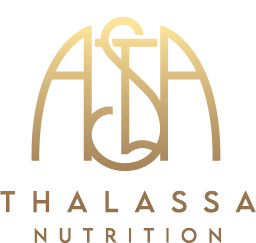As a Board Certified Gastroenterologist it is easy for me to discuss how important the digestive system is and when it’s not working properly how it can throw off the entire body.
My name is Dr. Liz Cruz, I have been practicing GI for almost two decades. I have my own practice in Phoenix, Arizona and have over 20,000 patients on my patient panel. I perform close to 3,000 colonoscopies and upper endoscopies per year so I have just a little experience in this area. Your digestive system is considered your second brain for a reason. Let me explain how important it is and when it’s not working properly how it can affect the rest of your health.
Your digestive system is made up of several organs; your mouth, esophagus, stomach, small intestine, pancreas, liver, gallbladder, and large intestine (colon). This is a very important set of organs in the body as its job is to digest, assimilate, metabolize and eliminate everything you put into it every day. This includes things like food, drinks, supplements, and medicines. This is the set of organs that is responsible for feeding your body the necessary nutrients it needs to be happy and healthy. So let’s discuss what happens when things go wrong.
Importance of Enzymes
First and foremost the most important part of the digestive system is the ability to digest your food properly. When food enters your stomach it is still a solid, obviously we chew our food but we don’t chew it into a liquid. Your body cannot use food in a solid form, it has to be broken down into a liquid in order for your body to absorb it properly. This process takes place in the stomach where acid, enzymes and other digestive juices are created to break down your food. If there is not enough enzymes or juices that form, thorough digestion cannot take place. Meaning your food is going to move into your small intestine in chunks instead of in liquid form.
If the body cannot absorb the undigested particles of food, the body will not be able to get the nutrients from the food you are eating. This is how we slowly malnourish our cells and in turn our body. You can be eating the healthiest diet in the world, but if your body is not breaking down the food, you’re not going to benefit from it. A malnourished body is tired, has low energy and cannot make healthy red blood cells, in turn causing many areas of the body to suffer, for example the heart, the brain, and the bones. We as a society tend to eat the Standard American Diet (SAD) which consists of fast food, processed foods and foods loaded with chemicals and preservatives. Because we are eating foods that really aren’t food, our body doesn’t know how to break it down to benefit from it, in turn we are slowly malnourishing our bodies.
A Leak in Your Gut?
The other issue caused by undigested food moving into the small bowel is a disease state called leaky gut. While the small intestine is trying to absorb the chunky food, the chunks leave small holes or tears in the small intestine. This means that more substance than should are entering the body, causing there to be an immune response, such as allergic reactions to foods or food sensitivities. Never before in history has there been so many people with food allergies, or issues with gluten as we have today. This is mainly because of leaky gut syndrome.
Is Your Gut Flora Strong?
Another digestive issue that causes whole body health issues is not having a strong gut flora. Eighty percent of our immune system resides in our gut. Mainly because we tend to get exposed to germs, bacteria and viruses through our mouth. Our digestive system is home to trillions of good bacteria helping to fight off those germs that we get exposed to every day. The problem is many of us don’t have enough good bacteria in our gut to do an effective job. Because of our poor diets, high stress levels and common use of antibiotics, our gut flora is extremely compromised. Having more bad guys than good guys in our gut can lead to us being sick on a regular basis with infections (sinus, ear, etc.), in addition to digestive issues such as constipation, diarrhea, gas and bloating.
Pillage in Your Pipes?
Speaking of elimination issues, if we are not having regular bowel movements it can lead to a whole host of medical issues. Ideally you should be having a bowel movement three times per day, the idea is food in, food out. So if you are eating three times per day you should be pooping three times per day. Most people are not experiencing this and are lucky to have one bowel movement per day. If this is the case, you are considered constipated. Your intestines are not lead pipes, they are tissue with blood running through them. When you have days of poop piled up in there waiting to come out it causes a toxic build up in the colon. The same blood that runs through your toxic colon also runs through your brain and your heart. This toxic blood can cause headaches, fibromyalgia, skin irritations, tiredness, low energy, foggy brain, etc.
As you can see, it is imperative to have a healthy digestive system in order to have a healthy body. Without one the other cannot exist. If you are having digestive issues, consider trying some natural options before opting for prescription meds. I am all about a healthy digestive system and in turn a super healthy body!




